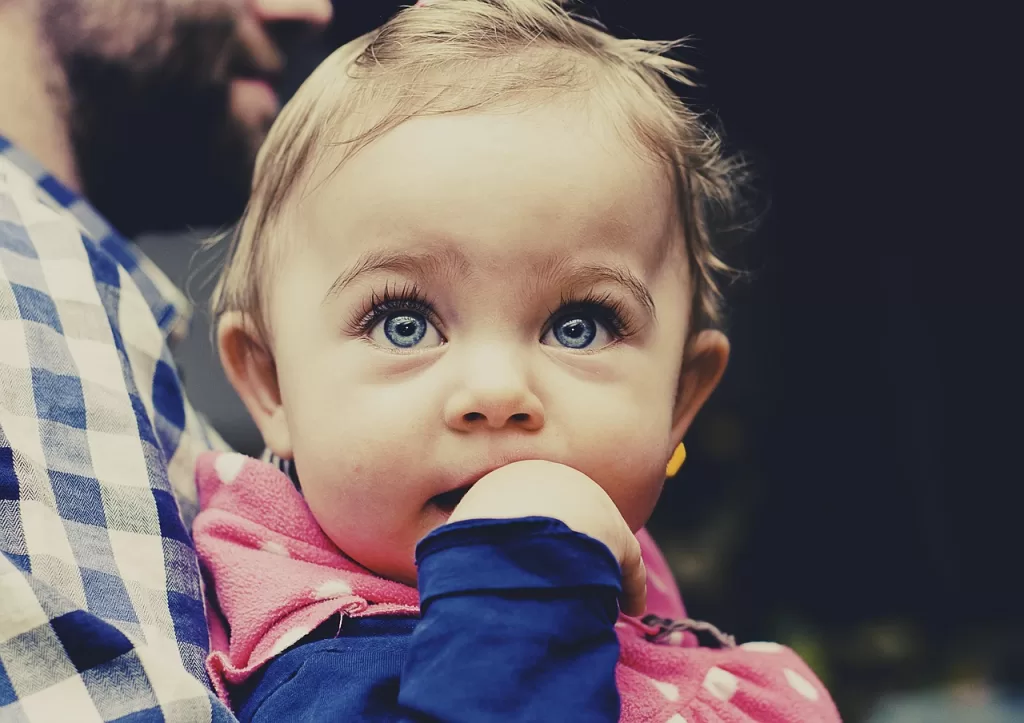
When it comes to raising a child, it’s natural for parents to have questions about their baby’s development. One of the most common questions is: when can babies see color?
This is an important question to answer, as it helps parents understand the development of their child’s vision. In this article, we’ll explore the answer to this question and provide an in-depth look at when babies are able to see color.
What Is Color Vision?
First, let’s define what color vision is. Color vision is the ability to detect differences between different colors. It is a process that occurs in the eye and is controlled by the brain. It helps us make sense of the world around us by allowing us to differentiate between colors.
Color vision is typically developed in the first year of life, though it can take longer for some babies to develop this skill. Babies are born with the ability to detect light and dark, but they are not able to differentiate between different colors until they are a bit older.
How Does Color Vision Develop?
During the prenatal period, as babies develop inside the womb, their eyes undergo significant growth and maturation. As they approach birth, they gradually acquire the ability to perceive distinctions between light and dark.
As babies continue to grow and reach milestones in their development, their visual system becomes increasingly sensitive to colors. This progression allows them to perceive and differentiate various hues as their eyes become more attuned to the full spectrum of colors in their environment.
The development of color vision is the result of a complex interaction between the eye and the brain. The eyes detect the different wavelengths of light, and the brain processes this information and translates it into the colors we see.
When babies are born, their eyes are able to detect differences between light and dark, but they are not yet able to differentiate between different colors. As the baby grows, the brain continues to process the information from the eyes and the baby’s color vision gradually develops.
When Do Babies See Color?
Babies typically begin to develop their color vision around the age of six months. However, it’s important to note that individual babies may show variations in the timing of this development.
By the time babies reach one year of age, their color vision is usually fully developed. At this stage, they should be capable of perceiving and distinguishing various colors in their surroundings. This development allows them to differentiate between hues and experience the vibrant world of colors around them.
Benefits of Color Vision
Color vision is an important part of development. It helps babies learn and understand their environment and helps them to interact with the world around them.
Color vision also helps babies learn language. As they learn to differentiate between colors, they can also begin to associate colors with words. This helps them understand language and helps them to communicate better.
How to Help Your Baby Develop Color Vision
There are several things that parents can do to help their baby develop color vision. One of the most important things is to provide a stimulating environment.
Make sure that your baby is exposed to a variety of colors. This can include brightly colored toys, books, and other objects. This will help your baby learn to differentiate between different colors.
You can also talk to your baby about the different colors they see. Point out different colors and name them to help your baby learn the names of the colors.
Finally, you can help your baby develop color vision by playing games. You can play games such as matching colors, sorting colors, and other activities that help your baby learn to differentiate between different colors.
Conclusion
When it comes to your baby’s development, color vision is an important milestone. Most babies are able to detect color by the time they are six months old, and their color vision should be fully developed by the time they are one year old.
